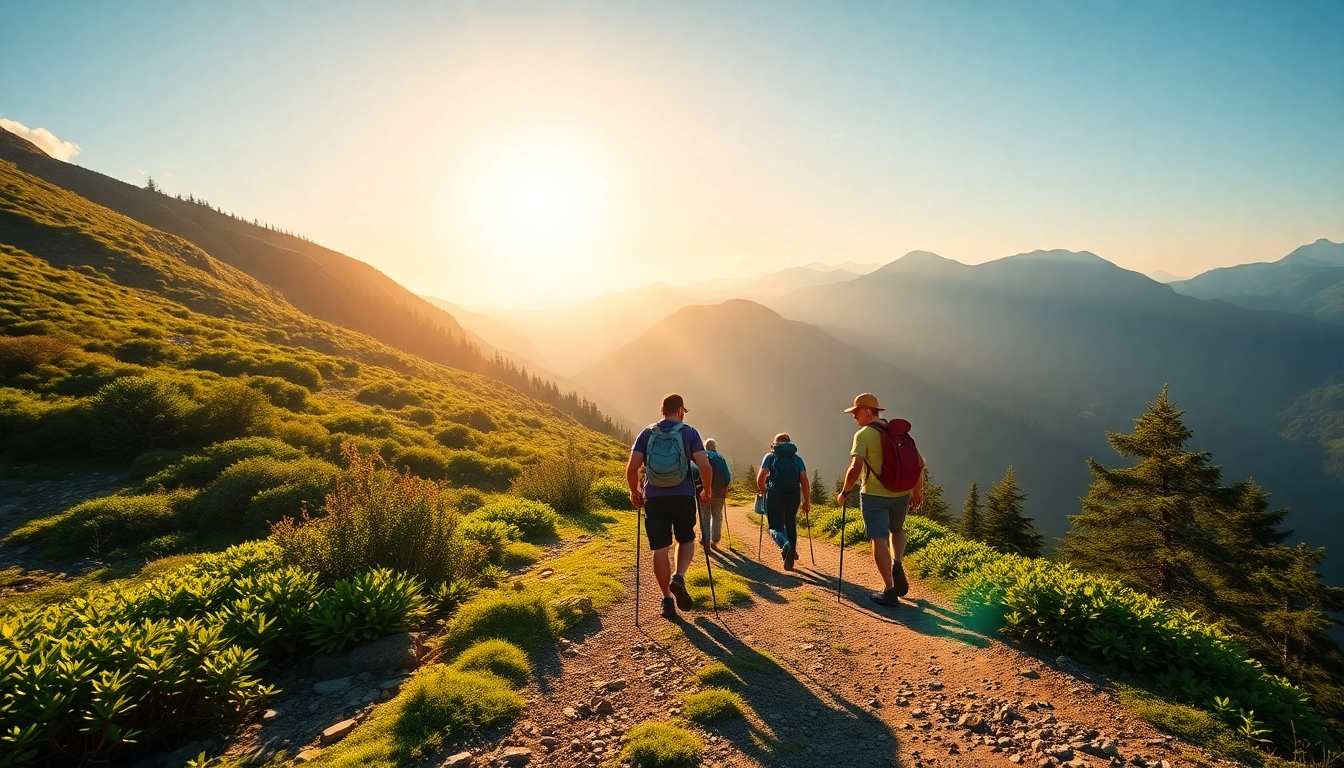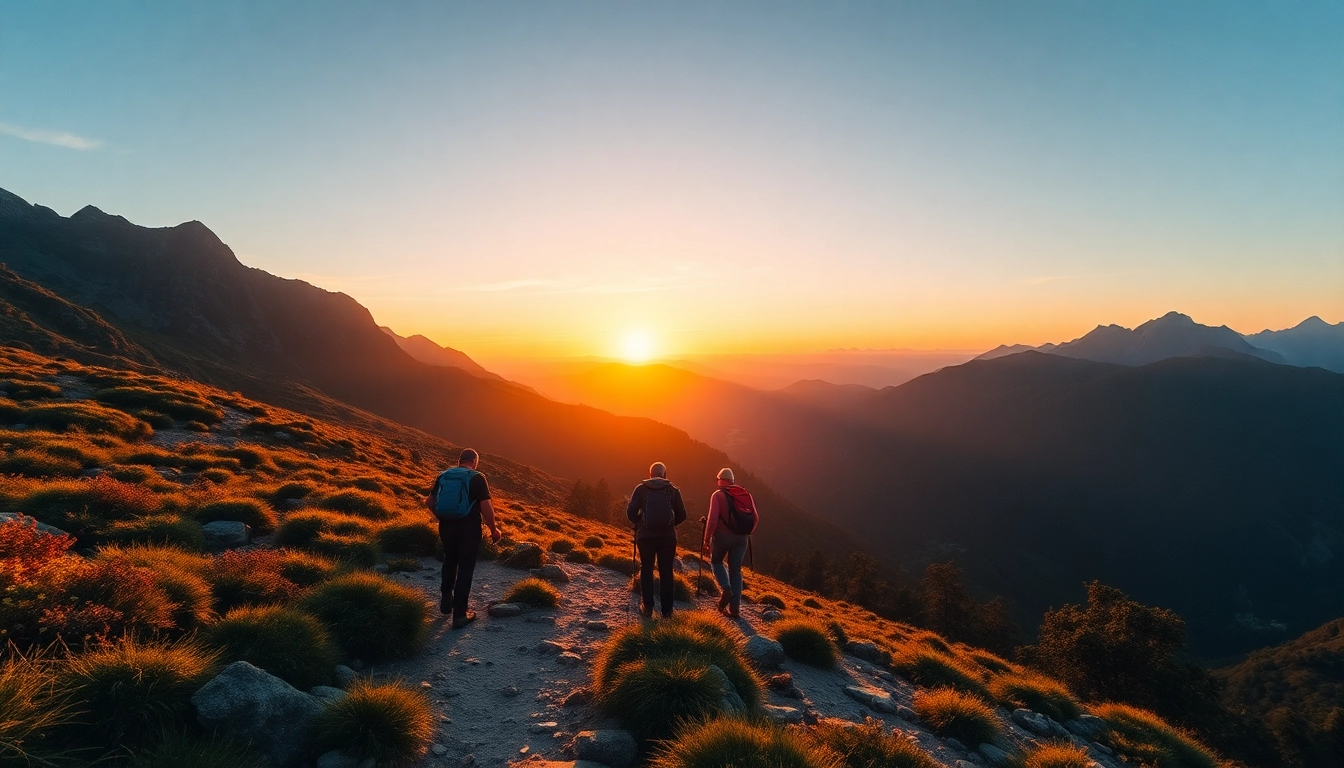Understanding Key Elements of a Guided Trek
Embarking on a guided trek is an extraordinary way to explore some of the world’s most breathtaking natural landscapes, while enjoying the comfort and safety of expert guidance. A guided trek offers a structured and immersive experience, allowing trekkers to connect deeply with nature, local cultures, and oneself. Whether you’re an experienced hiker or a novice adventurer, understanding what constitutes a guided trek and its myriad benefits sets the foundation for a rewarding journey.
What Defines a Guided Trek and Its Benefits
A guided trek is a planned expedition on foot, led by an experienced guide who provides navigation, safety assurances, and interpretive insights about the terrain and local culture. Unlike independent hiking, guided treks are organized to include logistical support, expert knowledge, and cultural engagement. Benefits include enhanced safety, access to remote and challenging routes, educational enrichment, and a sense of community among participants.
In the context of Indonesia, particularly in regions like Lombok, guided treks are essential for navigating rugged terrains such as volcanic slopes, dense forests, and cultural villages, often inaccessible to untrained trekkers.
How Guided Treks Enhance Safety and Experience
Safety is paramount in wilderness exploration. Guided treks significantly reduce risks associated with unfamiliar terrains, unpredictable weather, and local wildlife. Guides are trained to handle emergencies, provide first aid, and adapt itineraries as needed, ensuring trekkers’ well-being throughout the journey. Moreover, guides serve as cultural ambassadors, sharing local stories, traditions, and ecological information, thereby enriching the overall experience. This combination of safety and knowledge transforms a simple walk into an educational adventure.
Different Types of Guided Treks for Various Skill Levels
Guided treks can be tailored for all skill levels, from beginner-friendly day hikes to multi-day complex expeditions. In Indonesia, options range from gentle walks through rice terraces for beginners to challenging mountain ascents like Rinjani Volcano for seasoned hikers. Specialized treks also exist for specific interests such as bird-watching, cultural exploration, or wildlife photography, ensuring every adventurer can find an experience aligned with their capabilities and passions.
Planning Your Perfect Guided Trek in Indonesia
Choosing the Right Route and Duration
Selecting the appropriate route hinges on your fitness, interests, and available time. For first-timers, shorter treks spanning a day or two, such as hikes around Lombok’s waterfalls or cultural villages, are ideal. More experienced trekkers seeking a challenge may opt for multi-day routes like the Mount Rinjani summit trek, which lasts 3 to 4 days and offers dramatic volcanic landscapes. Carefully consider the trek’s difficulty, altitude, and environmental conditions. In planning your trek duration, factor in acclimatization time, rest days, and side excursions to maximize enjoyment without exhaustion.
Inclusion of Local Guides and Cultural Insights
The value of local guides cannot be overstated. They bring authentic cultural knowledge, language skills, and ecological expertise, transforming a routine hike into a profound cultural exchange. In Lombok, guides often share stories about local traditions, spiritual beliefs, and environmental conservation efforts, fostering respect and understanding. Choosing a guided trek that emphasizes cultural interaction enhances your connection to the place, creates meaningful memories, and supports local communities directly.
Best Time of Year for Trekking in Lombok
Indonesia’s climate varies, but the dry season from May to September is generally optimal for trekking in Lombok. During these months, weather conditions are more predictable with less rain, clearer skies, and stable temperatures, reducing risks such as slippery trails or flash floods. The shoulder months of April and October can also offer good trekking conditions with fewer crowds. Avoid the rainy season (November to March), which can make trails treacherous and disrupt travel plans. Consulting local weather forecasts and trail conditions is vital for planning a safe and enjoyable trek.
Preparing for Your Guided Trek
Essential Gear and Packing Tips
Adequate preparation is key to a successful trek. Essential gear includes supportive hiking boots, moisture-wicking clothing, base layers, waterproof jackets, sun protection, and a hat. Carry a lightweight backpack with necessary supplies like water, high-energy snacks, a first aid kit, navigation tools, and a camera. For longer treks, packing a sleeping bag, headlamp, and extra clothing is advisable. Respect local customs by packing modest apparel if visiting villages. Using lightweight, durable gear helps maintain agility and comfort throughout the journey.
Physical Preparation and Training
Consistent physical training significantly improves your trekking experience. Incorporate cardiovascular exercises such as walking, running, cycling, or swimming to build stamina. Strength training focusing on legs, core, and back prepares your body for uphill climbs and carrying a pack. Practice packing your trek gear to simulate actual conditions. Additionally, doing practice hikes with a loaded backpack on similar terrains can boost confidence and reveal necessary adjustments before the actual journey.
Health and Safety Precautions
Prior to trekking, ensure you are medically fit by consulting a healthcare professional. Obtain necessary vaccinations and carry prescribed medications, including altitude sickness remedies if applicable. Stay hydrated, protect against sun exposure, and be mindful of common health issues like blisters, dehydration, or minor injuries. Communicate your itinerary and emergency contacts to a trusted person and consider hiring guides who are trained in first aid and rescue procedures.
What to Expect During a Guided Trek
Daily Trekking Itinerary and Highlights
Guided treks typically follow a well-structured daily plan, balancing movement and rest. Mornings often start early to capitalize on cooler temperatures and optimal lighting for photos. Expect to traverse scenic mountain trails, lush forests, volcanic landscapes, or scenic viewpoints, depending on your route. Guides highlight ecological features, local legends, and cultural landmarks along the way. Evenings usually involve camp setups or comfortable lodges, opportunities for socializing, and reflection on the day’s experiences.
Interaction with Local Communities and Nature
Engaging with local communities enriches the trek and promotes responsible tourism. Many guided treks in Indonesia include visits to traditional villages where trekkers observe craft-making, participate in cultural ceremonies, or learn about daily life. Such interactions foster mutual respect and support sustainable local economies. Nature observation, including birdwatching and wildlife spotting, reveals the rich biodiversity of the region. Responsible trekking emphasizes minimizing environmental impact, conserving flora and fauna, and respecting cultural sensitivities.
Photos, Memories, and Post-Trek Guidelines
Document your journey through photos, videos, and journal entries—trekking in Lombok provides countless spectacular vistas and intimate moments. Respect nature’s rules by not disturbing wildlife, avoiding littering, and staying on designated trails. After completing your trek, share experiences responsibly, support local artisans by purchasing souvenirs ethically, and consider giving back to community projects or conservation initiatives. Proper post-trek care includes rest, hydration, and stretching to prevent injuries, along with sharing your stories to inspire others.
Maximizing Your Trekking Adventure
Tips for Photography and Wildlife Watching
To capture the essence of your trek, carry a lightweight camera or smartphone with a good zoom lens. The best lighting occurs early mornings and late afternoons; aim to photograph landscapes during these golden hours. Be patient and quiet to observe wildlife such as endemic birds or monkeys. Use binoculars if available, and seek out vantage points that reveal panoramic vistas. Respect wildlife by maintaining a safe distance and avoiding disturbance.
Understanding Local Flora and Fauna
Indonesia’s biodiversity is extraordinary. Familiarize yourself with native plants like the Rinjani pine and endemic orchids, as well as animals like the Lombok flying fox or Javan hawk-eagle. Guides can provide identification tips, ecological roles, and conservation statuses. Learning about the flora and fauna enhances appreciation and encourages responsible behavior in fragile ecosystems.
Leaving No Trace: Responsible Tourism Practices
Sustainable trekking practices are essential to preserve Lombok’s pristine environment. Follow Leave No Trace principles: pack out all trash, avoid damaging vegetation, and stick to established paths. Engage with local communities respectfully, support eco-friendly businesses, and adhere to cultural norms. By doing so, trekkers ensure future generations can enjoy the same natural beauty and cultural richness.

